Omaha Beach
In the early morning hours of June 6, 1944 the Allies invaded the Normandy coast with the goal of liberating France from German occupation and then pushing on to Germany. Overlord was the largest land, sea, and air operation ever. The invasion included over 5,000 ships, 11,000 planes, and over 150,000 men. There were five "beaches" or landing areas ... Omaha, Utah, Gold, Juno and Sword. More than 4,000 men died and there were 10,000 casualties.
The National D-Day Memorial Foundation has a lot of information about the invasion. To get an overview of D-Day, click here. Another source of excellent information is the National World War II Museum in New Orleans. The museum made it through Hurricane Katrina and features static and special displays as well as conferences and reunions. Click here for information about World War II and the museum.
The National D-Day Memorial Foundation has a lot of information about the invasion. To get an overview of D-Day, click here. Another source of excellent information is the National World War II Museum in New Orleans. The museum made it through Hurricane Katrina and features static and special displays as well as conferences and reunions. Click here for information about World War II and the museum.
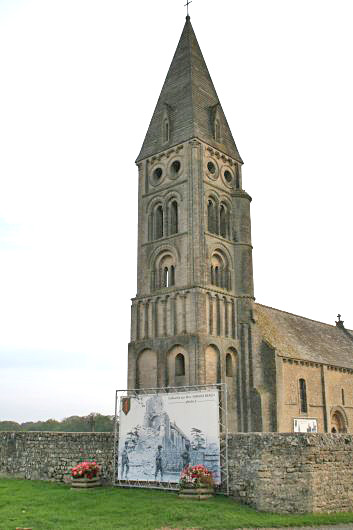
The village of Colleville sur Mer suffered a lot of damage when American forces fought their way off the beachhead and into the surrounding areas. In the village today, there are reminders of what happened. Huge photos of the damage are displayed in front of many buildings. One example is this beautiful old church.
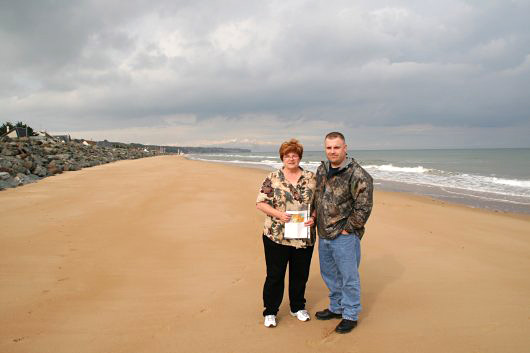
Omaha Beach - one of the American landings - is actually four miles wide. The entire D-Day beach width is sixty miles. Until we actually stood there, we did not understand the enormity of the invasion.

The French people have erected hundreds of memorials and tributes to the Allies but this one is the most unique. It sits right on Omaha Beach. The metal pieces that stand tall or lean toward the beach represent the men who made it through the landing and moved forward ... the pieces that lean toward the ocean honor the men who died there.

This German bunker is a very small example of what awaited the landing forces. Look close and you can see the big gun still in place. In 1994, this bunker was dedicated as a memorial to the men of the 467th Anti Aircraft Artillery Battalion (SP).

French farmers used "live" fences ... hedgerows, which are large, thick shrubs and roots grown together. The German army used the hedgerows as natural fortifications. During the war, the hedgerows and overhanging trees weren't trimmed so it made the invasion much more difficult as Allied troops moved inland from the beaches.
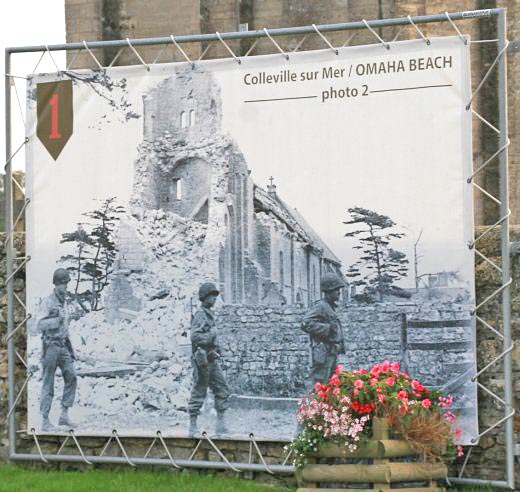
This is a closeup of the photo sign outside the church.
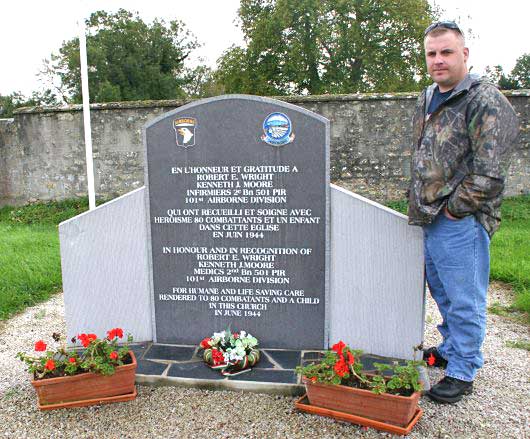
This memorial stands outside an old church in Angoville au Plain. It honors Robert E. Wright and Kenneth J. Moore, medics with the 101st Airborne Division. Wright and Moore, instead of moving on with their units, put themselves in more danger by staying behind to take care of injured soldiers and civilians. They used the church as a makeshift hospital.
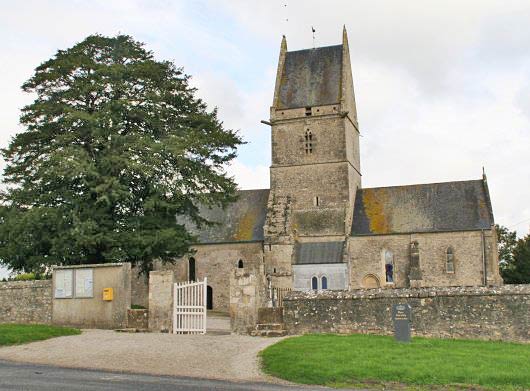
The old church - showing the wear of time and the ravages of war - still stands and visitors are welcome.
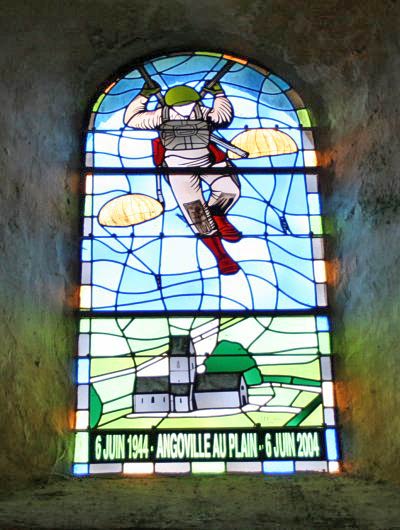
On the 60th Anniverary of D-Day, the French people replaced the battered stain glass windows in the church with new ones. They all honor the 101st Airborne Division and other troops that participated in the invasion.
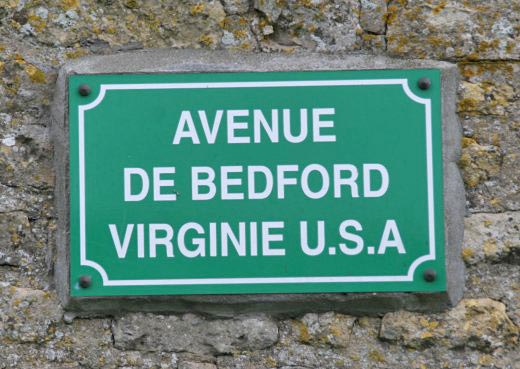
Many streets and buildings in France are named after Americans. This one is named for a city: Bedford, Virgina. Bedford had the highest casualty rate for its population of any place in the nation during the D-Day invasion. It's National Guard unit was nearly wiped out. For more on Bedford's participation in Overlord - and to read the words of some survivors - click here.